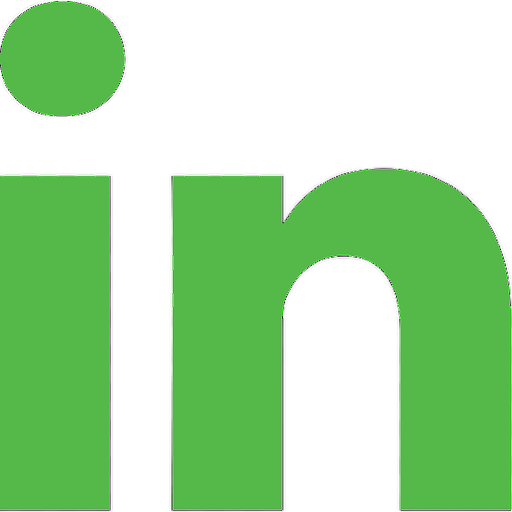A Brief History of CEDAR Products
The 1980s
In 1983 the British Library National Sound Archive agreed to fund a research project that would lead to the creation of the earliest PC-based audio restoration systems. Two years later, following a brief collaboration with Neve Electronics that led directly to the earliest Neve DSP mixing desks, the Archive approached the Engineering Department at Cambridge University, offering to fund a Doctorate research project into digital audio restoration. It was the groundbreaking work in this project that, in 1987, led to the announcement of the prototype CEDAR computer. Because of the Archive's involvement this system incorporated a set of algorithms that were most suitable for restoring damaged recordings stored on decaying media such as wax, shellac, and celluloid.
The prototype was demonstrated successfully at the 1987 European AES Convention, but it was a feature on BBC TV's Tomorrow's World programme that generated the greatest interest and helped to secure the Library's agreement to develop a commercial system.
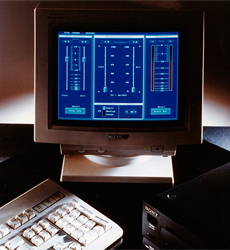
Almost from the outset, all CEDAR processes operated in real time, providing huge advantages over methods that required the loading of hard disks followed by off-line processing. One of these advantages was the ability to ride the controls, adapting the processes for varying noises within the recording... something that was impossible when using an off-line process. This made CEDAR uniquely suited to restoring tapes and soundtracks as well as 78s and cylinders.
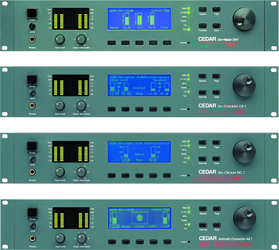
The 1990s
In 1990, following 16 months of successful bureau work for customers including CBS, Denon Columbia and Sony Music, the first commercial CEDAR Systems were released. These were used to clean up thousands of old recordings for release on CD, plus many vintage movies and TV series for broadcast. Soon adopted by mastering studios, broadcasters, national libraries and archives, the early 16-bit CEDAR Systems then spawned the 20-bit CEDAR-20 Production System plus a range of 24-bit hardware processors.
The DC-1 Declicker (1992) and the CR-1 Decrackler (1993) were the world's first digital audio restoration rackmount units, retrospectively named the Series 1 modules. Groundbreaking as they were, these were superseded in 1994 by the much upgraded SERIES 2, a range that included the AZ-1 Azimuth Corrector, the latest incarnations of the DC-1 and CR-1, and the DH-1 Dehisser.
In 1996 we introduced CEDAR for Windows, the world's first 16-track, multi-process audio restoration system. Hosted by a robust industrial-grade PC (which was required in the mid-90s to accommodate the system's 800 MFLOP of DSP power) it looked and performed like nothing ever seen before, and it proved to be a major success with users in all fields of professional audio. A smaller Macintosh equivalent appeared in September of that year; CEDAR for Pro Tools offered a subset of CEDAR for Windows' processing modules. Before the end of that year, CEDAR also announced its first OEM Agreement with a DAW manufacturer. Developed in collaboration with Studio Audio and Video, DeNoise became the first CEDAR process to run on another manufacturer's hardware.
The next leap forward appeared in 1997 when we launched Series X. This was a cost-effective range of rackmount units that embodied our most frequently used algorithms in compact 1U rackmount units, each with a user-interface of unrivalled elegance and simplicity. Although designed for studio use, these units were equally at home in a domestic environment.
The company concentrated on fundamental audio research throughout 1997 and 1998, developing a number of new algorithms including Debuzz, advanced dynamics processes and EQs for CEDAR for Windows, an improved noise reduction process for the DHX dehisser, and a 24/96 version of DeNoise for SADiE. There was also the revolutionary Declick for SADiE, which was the world's first digital audio restoration system to offer no parameters to the end-user... all processing decisions being made by the algorithm itself.
In March 1999, we released CEDAR for Windows 2, which incorporated our latest algorithms, refined user interfaces, and more software processes than the earlier version. At the same time, we released Series X+, a further development of the Series X range that added debuzzing and azimuth correction to our most popular range of products. The same year, we released CEDAR for Soundscape, providing world-class audio restoration to Soundscape's SSHDR-1 (and later R.Ed) users, and thus placing the CEDAR name in front of a new audience of audio engineers in smaller project studios. Up to this point, removing thumps had been a holy grail for the industry but it had proved extremely difficult (if not impossible) to do so. CEDAR dethump remedied this. Capable of removing problems of up to 50,000 (and later 100,000) samples duration, it was yet another demonstration of CEDAR's ability to remain at the very forefront of audio technology.
The 2000s
Not all CEDAR processes were designed to restore vintage or damaged recordings. Released in 2000, the DNS1000 dialogue noise suppressor was a prime example of this. An instant hit in post production studios, it was also widely used in real-time for sports, news channels, games and quiz shows, and many other forms of live broadcasting. It was a game-changer for many of its users, earning numerous industry accolades and awards, and many of these now vintage units are still in use today.
CEDAR's next product was even more innovative and, it's fair to say, forever changed the face of audio processing and editing. Released in 2002, Retouch introduced the concept of spectral editing to the world and, for the first time, allowed users to identify and eliminate specific sounds. Spectral editing has since become a standard tool in all manner of audio processing environments, and CEDAR has licensed the technology to many manufacturers that now offer products based upon its patented technology. The same year, we launched the DNS2000 which, in response to customers' requests, made the DNS process available in an automated form specifically for Pro Tools users. The DNS2000 itself provided the DSP power as well as the I/O for the system, while its Remote Control Software ran on all suitable Pro Tools systems and was fully integrated within their automation environment. Offering up to 252 channels in a single installation, the DNS2000 was more than adequate for the largest post installations.
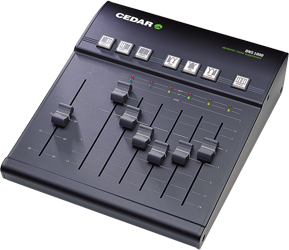
On another front, the company had been further developing its OEM technology and in 2002 CEDAR for SADiE was joined by CEDAR for AMS Neve, followed in 2003 by CEDAR for Pyramix. But the biggest news of 2003 was the launch of CEDAR Cambridge, still the company's flagship product. Dispensing with dedicated DSP boards, this used the ever-increasing power of the host processors to make multi-channel, multi-process restoration and noise suppression more flexible and productive than ever before, and subsequent releases have added more processes, huge improvements in architecture, and much more to the platform.
In 2004, equivalent advances in hardware technology made it possible to replace the three models in the Series X range with two new CEDAR Duo rackmounts - the DDC declickle and the DDH auto dehiss, both of which offered significantly better performance than their predecessors. Manufactured for more than twelve years, these were to be two of the company's most enduring products. The following year, the company released CEDAR Tools, which included Retouch and a suite of additional restoration process for Pro Tools PC. This was upgraded in 2006 to include an even wider range of processes. This was also the year in which the company released NR-5 for CEDAR Cambridge, which was the most natural sounding broadband noise reduction software yet developed.
By 2007, the DNS1000 had won Academy Awards for CEDAR's engineers and was to be found on dubbing stages and in post studios across the world. It had also found favour in many forensic audio applications. But due to imminent changes in the legislation surrounding electronic components and manufacturing, it was time to update it, and the company did so with the launch of the DNS1500. The following year, the DNS2000 was also discontinued and replaced by the elegant DNS3000 dialogue noise suppressor. With its moving faders, memories, remote control, on-board automation and more, this was the most sophisticated dialogue noise suppressor ever developed. In 2009, both the DNS1500 and DNS3000 were employed (together with CEDAR's ADA and HDA converters) as the basis of dedicated surveillance systems for police and security forces.
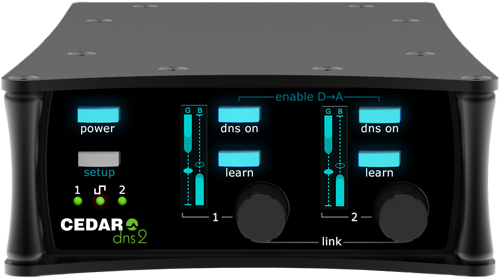
The 2010s
In 2009, it had become clear that the world required a plug-in version of CEDAR's DNS technology, so the company started developing DNS One, the world's first 'soft' dialogue noise suppressor. Upon its launch in 2010, this proved to be a huge success and the winner of multiple industry awards so, in 2011, we added three additional processes of particular value to customers working in audio post, and CEDAR Studio was born.
During this period, CEDAR's engineers had also been investigating new adaptive techniques to automate control of the core DNS algorithm, the results of which appeared in 2012 when the company released the DNS 8 Live dialogue noise suppressor. This included the unique LEARN capability that allowed the unit to determine the amplitude and colour of unwanted noise even while the wanted speech was present. An obvious example of the application of the latest machine learning techniques in audio, this quickly became a mainstay of news and sports broadcasting, with banks of units being seen in the broadcast centres of the most demanding events such as the Olympics and the FIFA World Cup.
Meanwhile, CEDAR was again turning its attention to the forensic and security arenas, and in 2014 launched its first product designed specifically for simultaneous real-time surveillance, recording, noise suppression and transcription. For the first time, CEDAR Trinity made it possible for non-expert field agents to perform - while events were unfolding - many of the tasks that would previously have been the province of audio forensics laboratories. Nonetheless, the company hadn't forgotten its customers in post and broadcast and, over the next 12 months, many major upgrades were released. Not least among these was DNS One with LEARN, which in 2015 delivered to DAW users the adaptive techniques from the DNS 8 Live, further enhanced with a state-of-the-art machine learning algorithm. This superseded all of the previous DNS algorithms and soon appeared in CEDAR Cambridge as well as the company's plug-ins.
In 2016, two of CEDAR's most significant developments in this field were unveiled. The DNS 2 dialogue noise suppressor was designed specifically for location sound recordists and almost immediately became the most successful product in the company's history. Alongside this, the new FNR algorithm on CEDAR Cambridge v10 (which included the latest developments in LEARN and other areas of signal processing) superseded every previous broadband dialogue noise reduction process.
The next major release married the form of the DNS 2 with the latest signal processing techniques from CEDAR Trinity and FNR. Launched in 2017, the SE 1 Speech Enhancer was designed specifically for real-time surveillance where ease of use and rapid response were the overriding criteria, and it soon appeared worldwide in situations such as counter-terrorism and hostage crises. The following year, the filter section from CEDAR Trinity appeared as Trinity Enhance (superseded by Forensic Enhance in 2024) a plug-in that achieves remarkable results while remaining remarkably simple to use.
By 2019, the DNS 8 Live had been in production for seven years and was still a mainstay of the company's product lines. But during that period Dante® had become an important digital audio interface and customers were asking whether it could be added. They weren't to know, but the company had been working on the DNS 8 Live's successor for three years. When it appeared, the DNS 8D hosted an enhanced algorithm embodying everything that our signal processing researchers had learned since releasing the original model, an improved user interface and remote control and, of course, Dante to ensure that it would be suitable for use in all live situations in the modern audio world - not just broadcasting, but also live sound in venues such as theatres, concert halls, conferences venues, and places of worship.
The final release of the decade was CEDAR Trinity 4.1, which adopted many new features requested by CEDAR's customers in vital fields including counter terrorism, drug enforcement, customs and border control, and air and marine accident investigation.
The 2020s
At the same time as the company was developing the machine learning algorithms in its DNS products, it was researching the latest AI techniques related to audio pattern recognition. In 2020, it released Retouch 8™ which embodied the most advanced algorithm yet developed to identify repetitions of unwanted sounds, plus a new noise suppression/enhancement algorithm that, for the first time, allowed the system to manipulate identified sounds without affecting the surrounding 'atmos' and background signal. A huge leap forward from the interpolations of previous spectral editors, sounds could now be suppressed or even eliminated for restoration purposes or brought to the fore for forensic audio investigation. First appearing in CEDAR Cambridge 13 and then in the latest version of CEDAR for Pyramix™, this was accompanied on CEDAR Cambridge by the latest development in impulse noise reduction. Not just a declicker, INR also detects and eliminates the noise bursts that have previously required manual identification and removal.
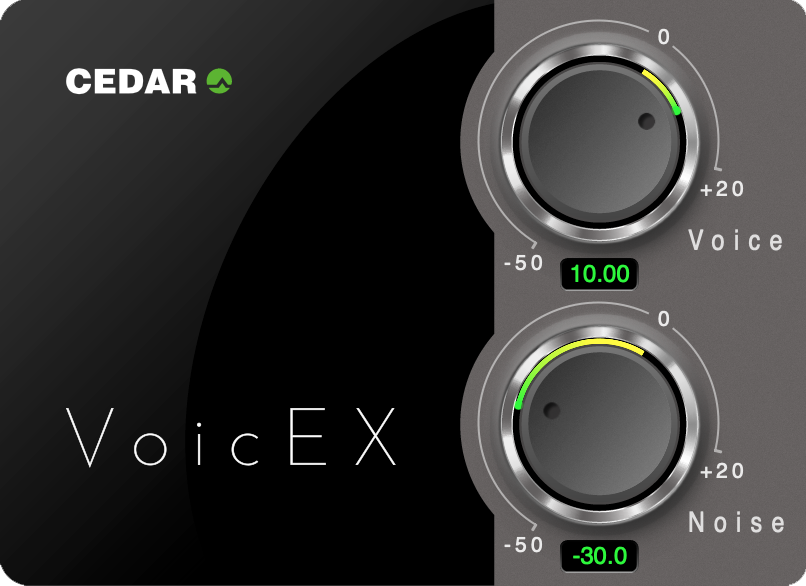
By this point, we had started developing our AI-based DNN (deep neural network) technologies, not just adopting academic developments from elsewhere, but seeing how these could be further developed and adapted for noise reduction. In 2023, we introduced the VoicEX™ voice extractor, first as a process on the new CEDAR Cambridge 14 system and then as the VoicEX AAX/AU/VST plug-in. This uses a completely new approach to voice extraction that creates two audio streams - one containing just the voices, and the other containing everything else - and takes noise reduction to a new level of efficacy and simplicity.
Today, products such as CEDAR Cambridge, VoicEX, CEDAR Studio and CEDAR Trinity remain the tools of choice in each of their markets, while CEDAR's hardware products - the DNS 2, DNS 4, DNS 8D and SE 1 - are worldwide standards within their industries. You can view each of these and more in the Product pages.
Leading the world in audio restoration and noise suppression for more than 35 years



